Abstract
Visual long-term memory in primates has been assessed by using the pair-association (PA) task, in which a subject retrieves and chooses the paired associate of a cue picture. Our previous studies on single neurons in the anterior inferotemporal (AIT) cortex suggested their roles in representing paired associates in the mind. To test the possibility that the delay activity of AIT neurons is related to a particular picture as a sought target, we devised the PA with color switch (PACS) task. In the PACS task, the necessity for memory retrieval and its initiation time were controlled by a color switch in the middle of the delay period. A control task, in which there is no color switch, corresponds to the conventional delayed matching-to-sample (DMS) task where the monkey chooses the same picture as a cue. We found that AIT neurons started to respond just after the color switch in the PACS task, when the cue-optimal picture's associate was presented as a cue. In contrast, they showed no response change in the DMS task. We confirmed that this effect is not due to the visual response to colors. Furthermore, when the cue-optimal picture was presented as a cue, these neurons showed suppression after the color switch in the PACS task. These results suggest that the activity of AIT neurons mediates gating mechanisms that preferentially pass information about a sought target, even when the sought target is retrieved from long-term memory.
Full text
PDF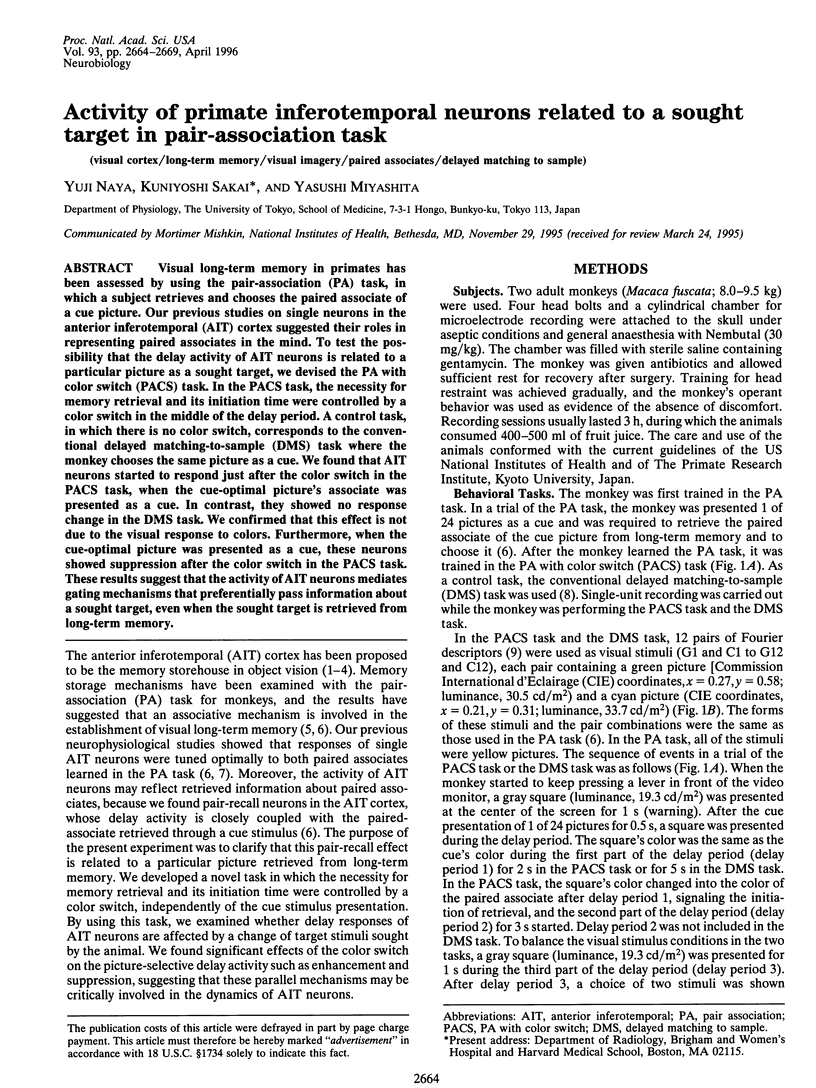
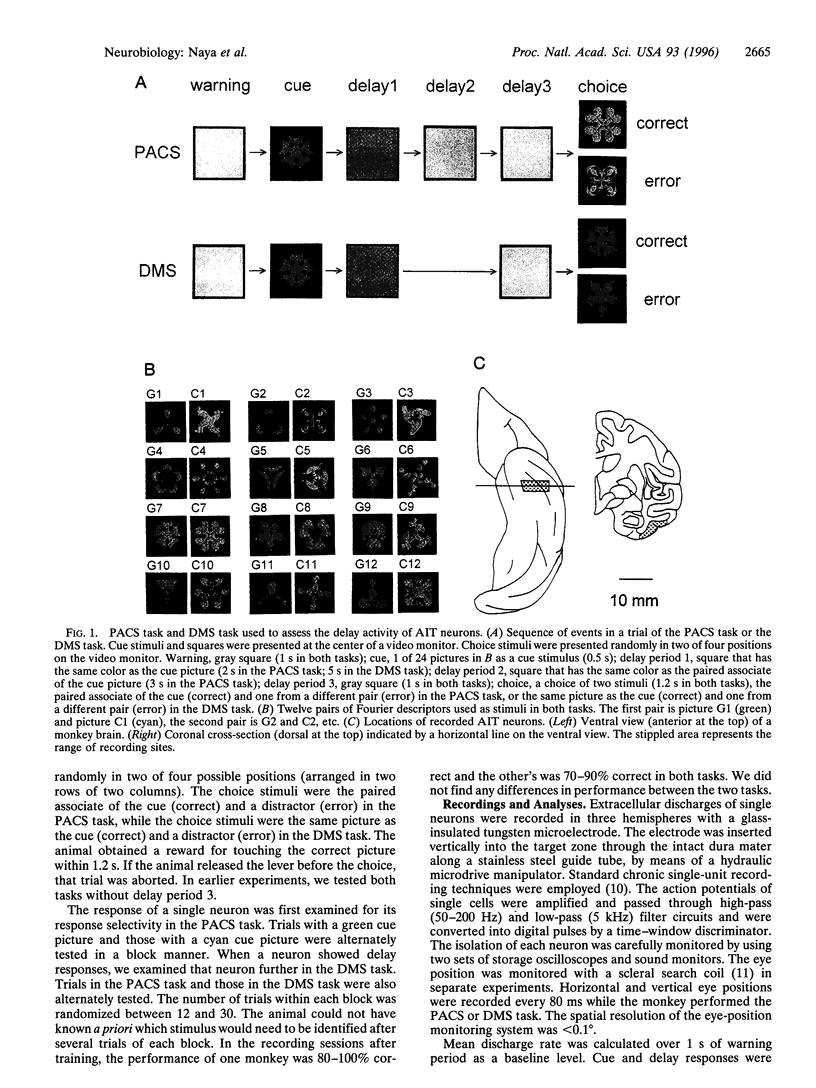
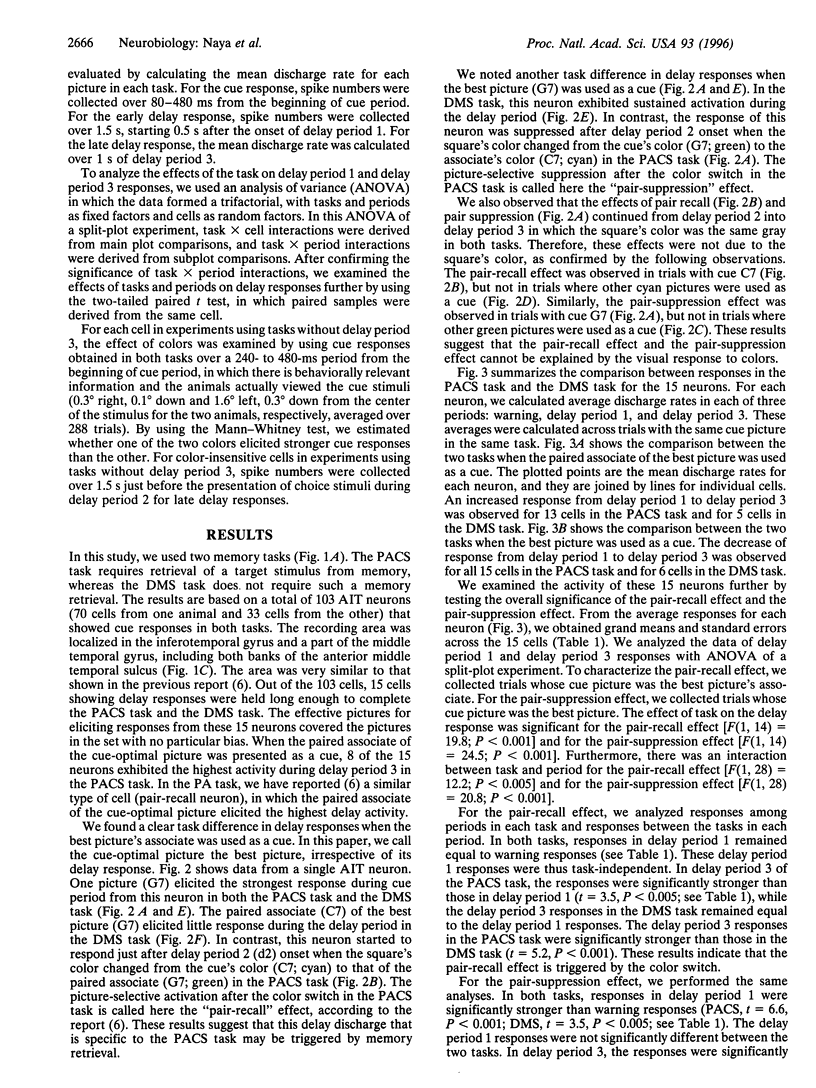
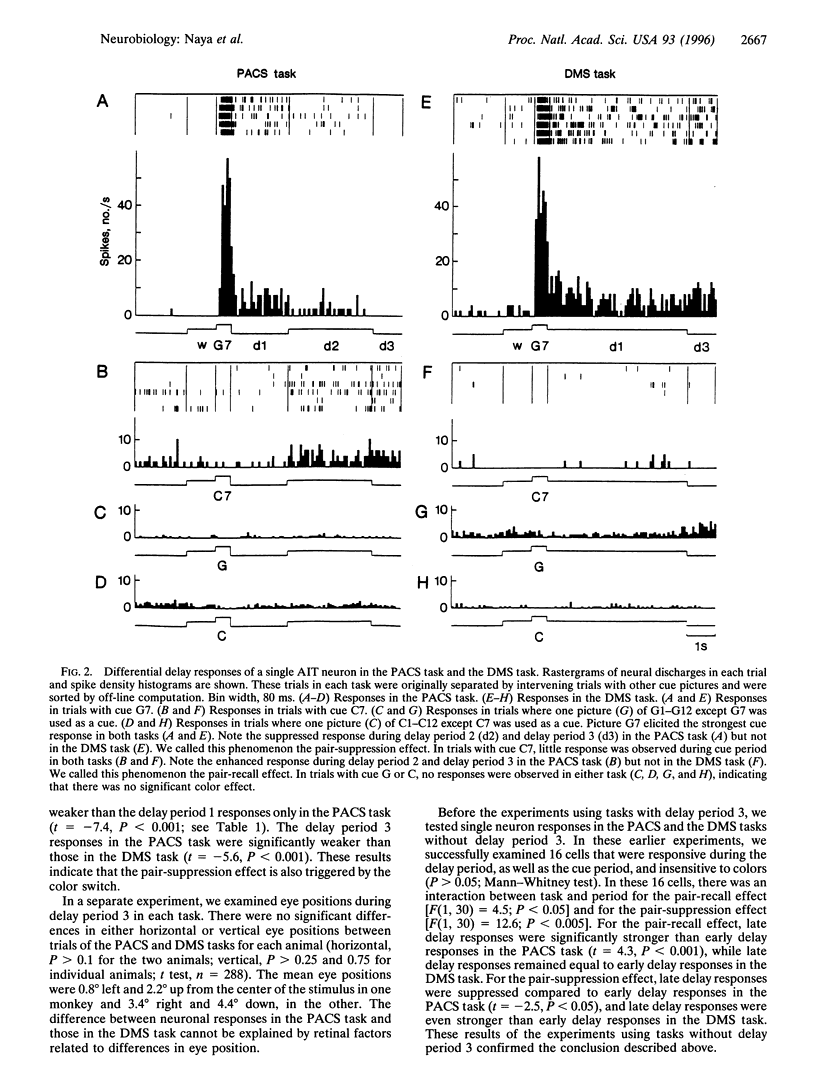
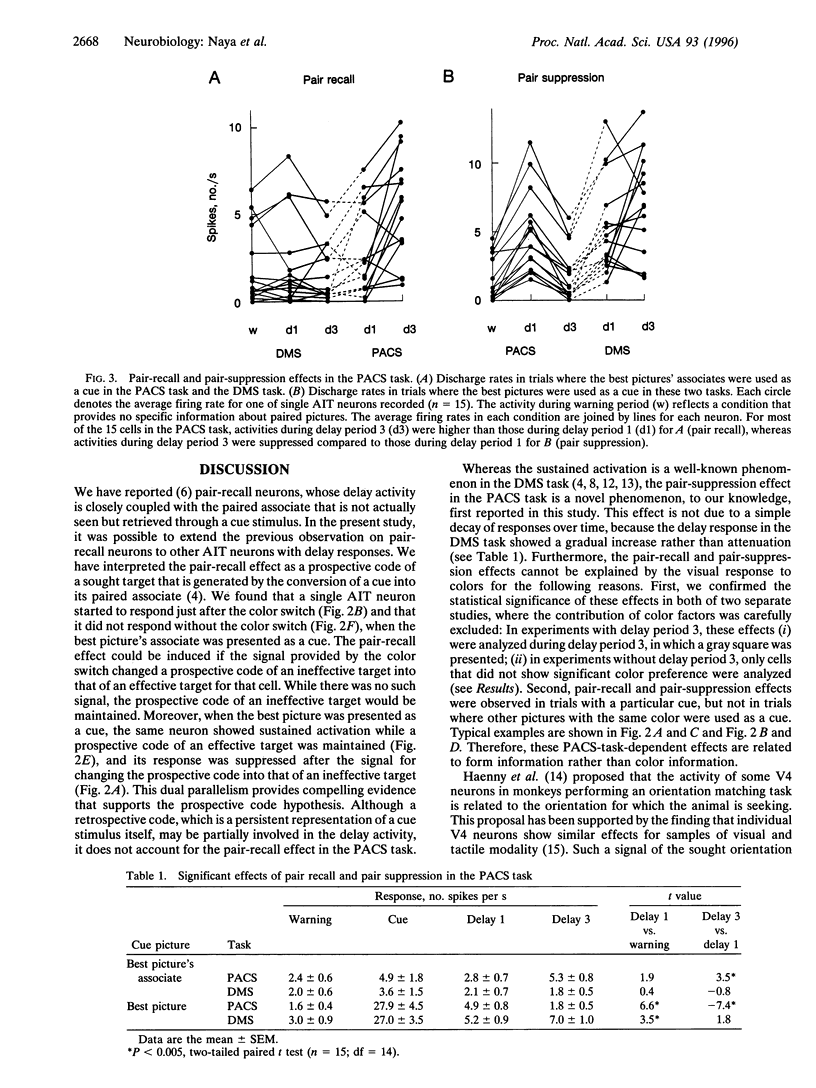
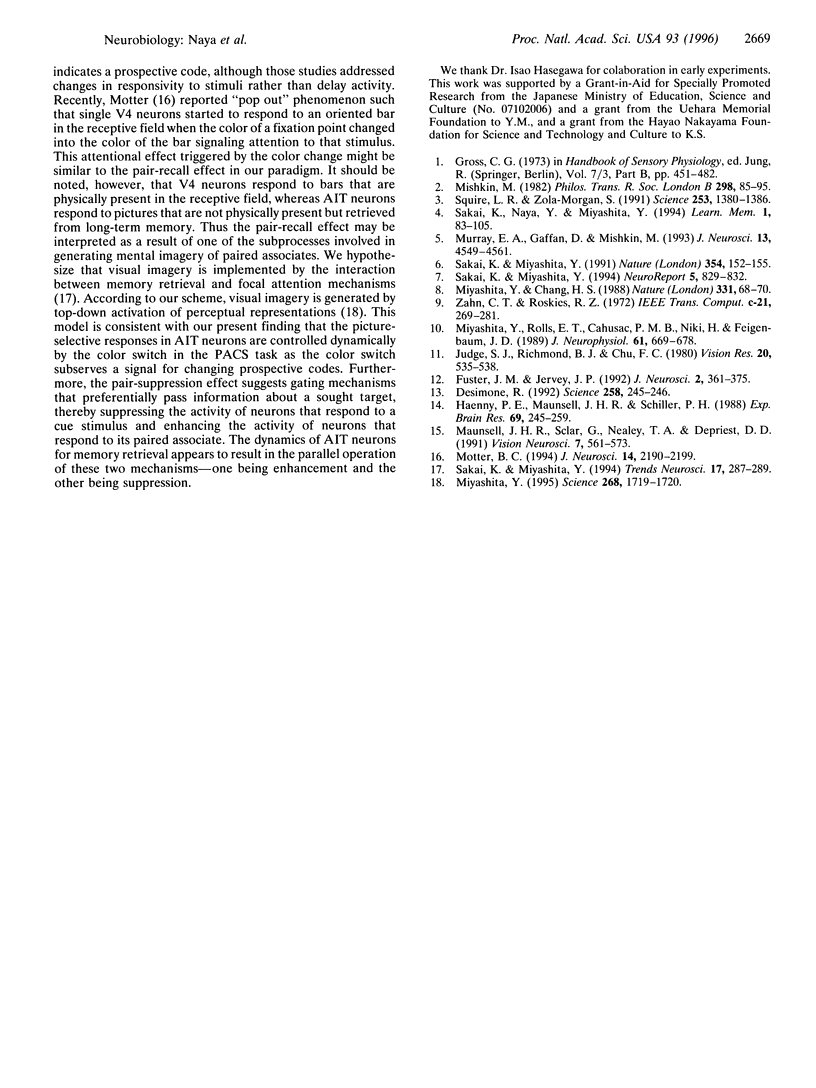
Images in this article
Selected References
These references are in PubMed. This may not be the complete list of references from this article.
- Desimone R. The physiology of memory: recordings of things past. Science. 1992 Oct 9;258(5080):245–246. doi: 10.1126/science.1411523. [DOI] [PubMed] [Google Scholar]
- Fuster J. M., Jervey J. P. Neuronal firing in the inferotemporal cortex of the monkey in a visual memory task. J Neurosci. 1982 Mar;2(3):361–375. doi: 10.1523/JNEUROSCI.02-03-00361.1982. [DOI] [PMC free article] [PubMed] [Google Scholar]
- Haenny P. E., Maunsell J. H., Schiller P. H. State dependent activity in monkey visual cortex. II. Retinal and extraretinal factors in V4. Exp Brain Res. 1988;69(2):245–259. doi: 10.1007/BF00247570. [DOI] [PubMed] [Google Scholar]
- Judge S. J., Richmond B. J., Chu F. C. Implantation of magnetic search coils for measurement of eye position: an improved method. Vision Res. 1980;20(6):535–538. doi: 10.1016/0042-6989(80)90128-5. [DOI] [PubMed] [Google Scholar]
- Maunsell J. H., Sclar G., Nealey T. A., DePriest D. D. Extraretinal representations in area V4 in the macaque monkey. Vis Neurosci. 1991 Dec;7(6):561–573. doi: 10.1017/s095252380001035x. [DOI] [PubMed] [Google Scholar]
- Miyashita Y., Chang H. S. Neuronal correlate of pictorial short-term memory in the primate temporal cortex. Nature. 1988 Jan 7;331(6151):68–70. doi: 10.1038/331068a0. [DOI] [PubMed] [Google Scholar]
- Miyashita Y. How the brain creates imagery: projection to primary visual cortex. Science. 1995 Jun 23;268(5218):1719–1720. doi: 10.1126/science.7792596. [DOI] [PubMed] [Google Scholar]
- Miyashita Y., Rolls E. T., Cahusac P. M., Niki H., Feigenbaum J. D. Activity of hippocampal formation neurons in the monkey related to a conditional spatial response task. J Neurophysiol. 1989 Mar;61(3):669–678. doi: 10.1152/jn.1989.61.3.669. [DOI] [PubMed] [Google Scholar]
- Motter B. C. Neural correlates of feature selective memory and pop-out in extrastriate area V4. J Neurosci. 1994 Apr;14(4):2190–2199. doi: 10.1523/JNEUROSCI.14-04-02190.1994. [DOI] [PMC free article] [PubMed] [Google Scholar]
- Murray E. A., Gaffan D., Mishkin M. Neural substrates of visual stimulus-stimulus association in rhesus monkeys. J Neurosci. 1993 Oct;13(10):4549–4561. doi: 10.1523/JNEUROSCI.13-10-04549.1993. [DOI] [PMC free article] [PubMed] [Google Scholar]
- Sakai K., Miyashita Y. Neural organization for the long-term memory of paired associates. Nature. 1991 Nov 14;354(6349):152–155. doi: 10.1038/354152a0. [DOI] [PubMed] [Google Scholar]
- Sakai K., Miyashita Y. Neuronal tuning to learned complex forms in vision. Neuroreport. 1994 Mar 21;5(7):829–832. doi: 10.1097/00001756-199403000-00023. [DOI] [PubMed] [Google Scholar]
- Sakai K., Miyashita Y. Visual imagery: an interaction between memory retrieval and focal attention. Trends Neurosci. 1994 Jul;17(7):287–289. doi: 10.1016/0166-2236(94)90058-2. [DOI] [PubMed] [Google Scholar]
- Sakai K., Naya Y., Miyashita Y. Neuronal tuning and associative mechanisms in form representation. Learn Mem. 1994 Jul-Aug;1(2):83–105. [PubMed] [Google Scholar]
- Squire L. R., Zola-Morgan S. The medial temporal lobe memory system. Science. 1991 Sep 20;253(5026):1380–1386. doi: 10.1126/science.1896849. [DOI] [PubMed] [Google Scholar]



